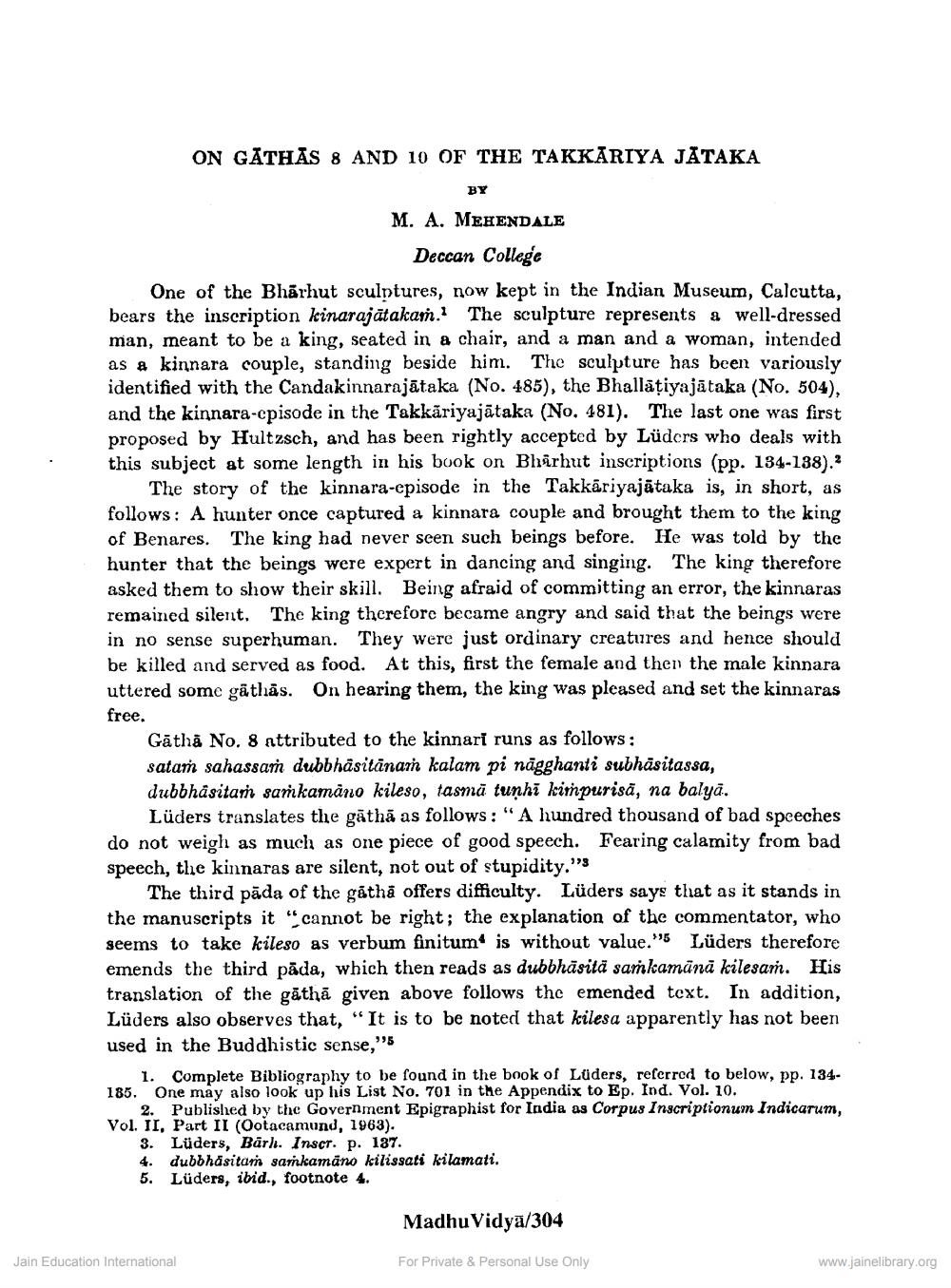________________
ON GATHĀS 8 AND 10 OF THE TAKKĀRIYA JATAKA
BY M. A. MEHENDALE
Deccan College One of the Bhärhut sculptures, now kept in the Indian Museum, Calcutta, bears the inscription kinarajātakam. The sculpture represents a well-dressed man, meant to be a king, seated in a chair, and a man and a woman, intended as a kinnara couple, standing beside him. The sculpture has been variously identified with the Candakinnarajātaka (No. 485), the Bhallāțiyajātaka (No. 504), and the kinnara-cpisode in the Takkāriyajātaka (No. 481). The last one was first proposed by Hultzsch, and has been rightly accepted by Lüders who deals with this subject at some length in his book on Bharhut inscriptions (pp. 134-138).2
The story of the kinnara-episode in the Takkāriyajātaka is, in short, as follows: A hunter once captured a kinnara couple and brought them to the king of Benares. The king had never seen such beings before. He was told by the hunter that the beings were expert in dancing and singing. The king therefore asked them to show their skill. Being afraid of committing an error, the kinnaras remained silent. The king therefore became angry and said that the beings were in no sense superhuman. They were just ordinary creatures and hence should be killed and served as food. At this, first the female and then the male kinnara uttered some gāthās. On hearing them, the king was pleased and set the kinnaras free.
Gātha No. 8 nttributed to the kinnari runs as follows: satan sahassam dubbhâsitānam kalam pi nāgghanti subhāsitassa, dubbhåsitam sarkamano kileso, tasmā tunhi kimpurisa, na balya.
Lüders translates the gathā as follows: "A hundred thousand of bad speeches do not weigh as much as one piece of good speech. Fearing calamity from bad speech, the kinnaras are silent, not out of stupidity."
The third pāda of the gātha offers difficulty. Lüders says that as it stands in the manuscripts it cannot be right; the explanation of the commentator, who seems to take kileso as verbum finitum is without value." Lüders therefore emends the third pāda, which then reads as dubbhāsitä samkamānā kilesaṁ. His translation of the gathā given above follows the emended text. In addition, Lüders also observes that, “It is to be noted that kilesa apparently has not been used in the Buddhistic sense,''5
1. Complete Bibliography to be found in the book of Lüders, referred to below, pp. 134185. One may also look up his List No. 701 in the Appendix to Ep. Ind. Vol. 10.
2. Published by the Government Epigraphist for India as Corpus Inscriptionum Indicarum, Vol. II, Part II (Ootacamund, 1963).
3. Lüders, Barh. Inscr. p. 137. 4. dubbhåsitar sankamano kilissati kilamati. 5. Lüders, ibid., footnote 4.
Madhu Vidyā/304
Jain Education International
For Private & Personal Use Only
www.jainelibrary.org




